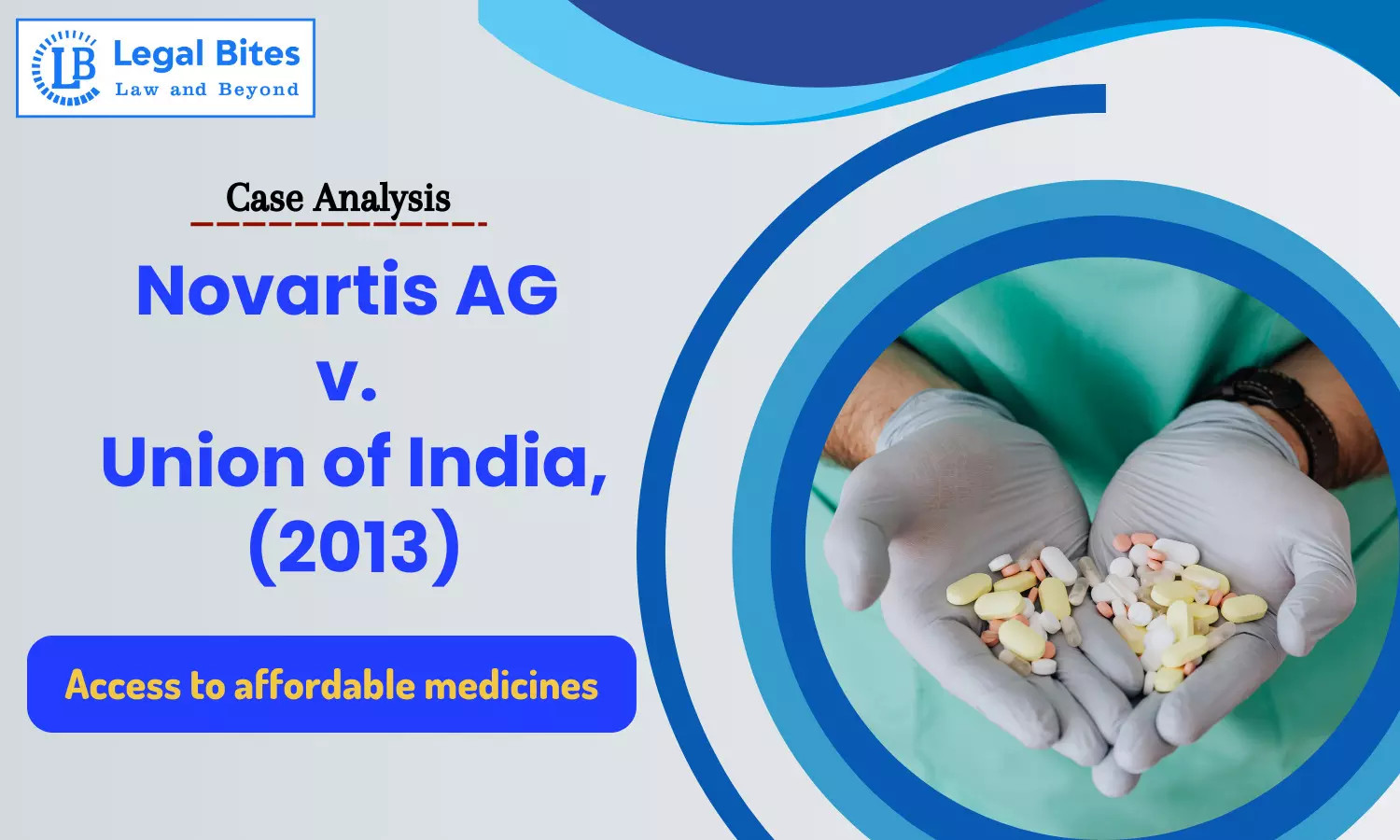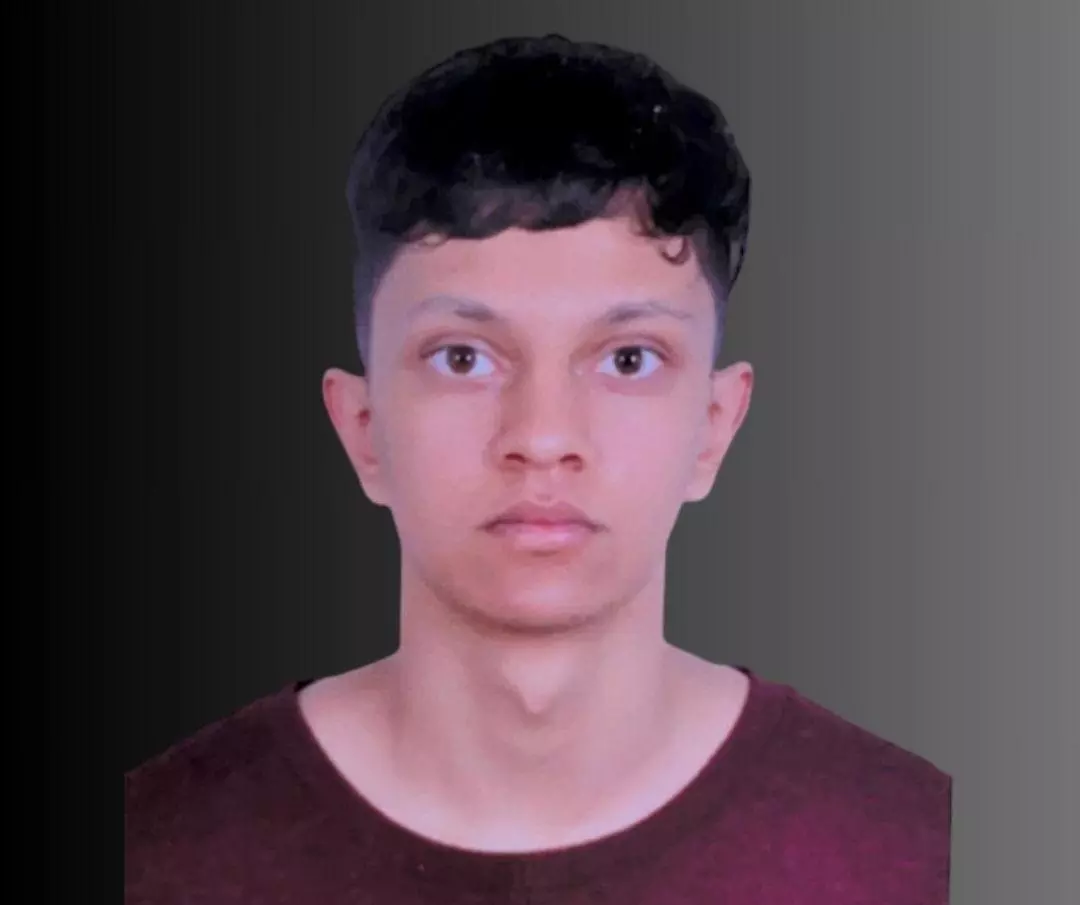Case Analysis: Novartis AG v. Union of India, (2013) | Affordable Access to Medicines
The 'Case Analysis: Novartis AG v. Union of India & Others, (2013)' revolves around a major legal dispute regarding patent law and the development of pharmaceuticals within India.

The 'Case Analysis: Novartis AG v. Union of India & Others, (2013)' revolves around a major legal dispute regarding patent law and the development of pharmaceuticals within India.
Case Title: Novartis AG v. Union of India & Others
Court: Supreme Court of India
Citation: [2013] 13 S.C.R. 148
Judge: Hon'ble Justice Aftab Alam and Justice Ranjana Prakash Desai
Decided: 1st April 2012
Facts of the Case
Jurg Zimmerman invented several chemical compounds that were a derivation of N-phenyl-2- pyrimidine-amine, of which the primary chemical compound in question was that of CGP 57148 in free base form (later given the International Nonproprietary Name ‘Imatinib’ by the World Health Organisation). This chemical was used primarily in battling leukaemia and other tumours in the human body and was granted a European Patent. The Appellant in this case, desired the patent of the beta crystal of the said chemical compound rather than in its free base form, and to prove that the said possesses patentability, the Appellant enumerated the two processes by which it is used differently in its beta crystal form and thus differs fundamentally from the chemical derivative as patented by Zimmerman.
The Appellant filed the said Patent Application before the Patent Office in Chennai on July 17, 1998, after which July 18, 1998, was accorded as the priority date. In its application, the Appellant stated that “the beta crystal form of Imatinib Mesylate, has
(i) more beneficial flow properties:
(ii) better thermodynamic stability; and
(iii) lower hygroscopicity than the alpha crystal form of Imatinib Mesylate. It further claimed that the aforesaid properties make the invented product “new” (and superior) as it stores better and is easier to process; has better processability of the methanesulfonic acid addition salt of a compound of formula I, and has a further advantage for processing and storing.
When the said application for grant of patent was filed in the year 1997, due to the ‘mailbox procedure’ it was only taken into consideration after certain amendments were made to the Patents Act in the year 2005. Thus, it may be stated that the application as submitted was made at a period wherein the patent regime in itself was different.
The appellant was, however, fully aware of these changes in the law and, to reinforce its claim for patent for the subject matter and to bring its claim within the ambit of the changed law, it filed four affidavits of certain experts, two of which stated that the beta crystal form of Imatinib Mesylate has much higher bioavailability as compared to Imatinib in free base form. However, before the application was accepted it was met with 5 pre-grant oppositions in terms of Section 25(1) of the Act. It was as a result of these oppositions that the Appellant filed the affidavits.
It should also be noted that the Appellate Tribunal under the legislation had yet to become functional at the time of the dispute. After its formation however, the case was shifted from the relevant High Court to the Intellectual Property Appellate Board (IPAB) where the proceedings relating to the 5 writ petitions filed by the appellants against the orders of the Assistant Controller, were heard by it. In light of the High Court’s observation, the IPAB also referred to the pricing of the drug Glivec by the appellant while it enjoyed EMR over it, and held that the patentability of the subject product would also be barred by section 3(b) of the Act.
Thereafter, the Appellant filed a Special Leave Petition before the Supreme Court of India.
Issues
1) What was the true import of Section 3(d) of the Patents Act, 1970?
2) What was the inter-relationship between Section 3(d) and clauses (j), (ja) of Section 2(1)?
3) Whether the said subject matter qualified as an invention u/s 2(1) clauses (j) and (ja) and whether it can still be denied because it is excluded as an invention u/s 3(d) of the Act.
Laws Involved in the Case
a) Section 2(1) (j) and (ja) of the Patents Act, 1970
a) Section 3(d) of the Patents Act, 1970
b) Article 14 of the Indian Constitution
c) Various provisions of the TRIPS Agreement
Arguments by both Parties
Appellants
To prove that their product observed patentability, the Appellants attempted to prove that the derivation/altered form of the chemical is distinct from Zimmermans. The Appellants resorted to elaborate the process of its invention, the dosage, means of administering etc.. and pointed out several ways to distinguish between that of Zimmerman's product and their own, thereby proving inventiveness and originality.
Using the said arguments, the Appellants also raised contentions concerning the provisions of the Law of the Patents Act in question. The harmonious and collective reading of Section 2 clauses (j) and (ja) and Section 3(d) of the Patents Act, 1970.
The Appellant also contended that Section 3(d) of the Act is not only arbitrary and violative of Article 14 but is also in contravention of certain essential ideals/practices laid out by the TRIPS agreement.
Respondents
To combat the attempt made by the Appellants regarding the validity of Section 3(d) of the Act, the Respondents in this case put forth that the examination of its validity would lead the case no further. Moreover, the Respondents went on to prove how the Appellants' claim for the Patent of the Beta Crystalline form of the substance was ineligible to be granted as such on account of a lack of improved/better efficacy than previous derivations of the substance.
The Court in this case also resorted to the application as filed by the Appellants and stated Section 3(d) states that the mere discovery of a new form of a known substance which does not result in the enhancement of the known efficacy of that substance.Moreover, the Bench in the case went on to state that the subject product was a new form of a known substance, the efficacy of which was well-known. Therefore it fully attracts Section 3(d) and it must be shown that the said product has some uniqueness/innovativeness/development to satisfy the substantive provision and the explanation appended to it.
In continuation of the same, the Respondents argued that the beta-crystalline form represented an incremental innovation and not a significant advancement or innovation deserving of a patent.
Finally, to add another layer of reiteration as to why the rejection of the Patent was a valid one, the Counsel for the Respondents relied on the concept of ‘evergreening’. A term popularly used in the realm of Intellectual Property which refers to the practice of extending the life of a patent by making minor modifications to an existing subject matter. The Union of India sought to prevent evergreening by insisting on a strict interpretation of patentability criteria.
Analysis of the Case
The case is an important judicial decision in the realm of Intellectual Property, specifically patents, patentability of subject matter, tests relating to patentability and other such aspects. In the case, the Appellant - Novartis AG, a big company in the pharmaceutical industry was denied a patent for a particular subject matter as discussed, because it did not amount to an ‘invention’ per se, and was rather a mere modification of the previously known form of the substance. In layman's terms, the Patentability of a thing refers to how unique it is and if it is a modification to an already existing subject matter which has been patented, then how it outperforms/is better than that previously existing patented subject matter.
Intellectual Property and its growing presence across the globe led to international developments in the form of a Convention known as the TRIPS Agreement or the Convention on Trade-Related Aspects of Intellectual Property Rights, which governs a lot of the essential aspects of Intellectual Property Law. For eg - in this case itself, the Bench stated that Article 27 which deals with Patentable Subject Matter is very much relevant since the entire dispute related to whether or not the Appellants altered/modified version of the previously existing substance was eligible to be granted a patent.
In the case, it was also observed that there was a slight discrepancy regarding the filing/granting of priority Dates that come with patent application and how they may be applied across different countries. Where, the IPAB suggested that the party was entitled to utilise the Swiss priority date as accorded to it, as the priority date in India as well. Moreover, the IPAB pondered upon essential aspects in the process of filing applications and being granted a patent for the subject matter. The Mailbox Procedure was hindering a speedy and effective process of the Patent Registry in India. It was observed as necessary for it to be curbed through legislative, judicial or administrative corrective measures.
Furthermore, the TRIPS Agreement was interpreted and relied upon to plug the apparent loopholes observed by both, The High Court of Madras and the IPAB. International Conventions are a great tool to ensure uniformity of law across different countries, which curbs the possibilities of ambiguity and conflict as seen in this case. The case highlights the importance of finding a balance between the protection of pharmaceutical companies' intellectual property rights while also emphasising public access to affordable medicines, which is a fundamental concern for public health. TRIPS recognizes the right of member countries to adopt measures necessary for public health and allows flexibility in patent laws.
Conclusion
The Novartis AG v. Union of India (2013), case holds profound significance in the intersection of intellectual property rights, public health, and pharmaceutical innovation. The Supreme Court's verdict, upholding the rejection of Novartis's patent for Glivec, demonstrates India's commitment to a nuanced approach in line with global trade agreements, including TRIPS.
By emphasising the stringent criteria of Section 3(d) to prevent patent evergreening, the judgment safeguards the delicate balance between incentivizing innovation and ensuring access to affordable medicines. This decision echoes beyond legal realms, setting a precedent for developing nations seeking to prioritise public health within their intellectual property frameworks. It reinforces the notion that access to medicines is a fundamental human right, contributing to a broader discourse on the ethical dimensions of pharmaceutical practices and fostering a more equitable global healthcare landscape.

